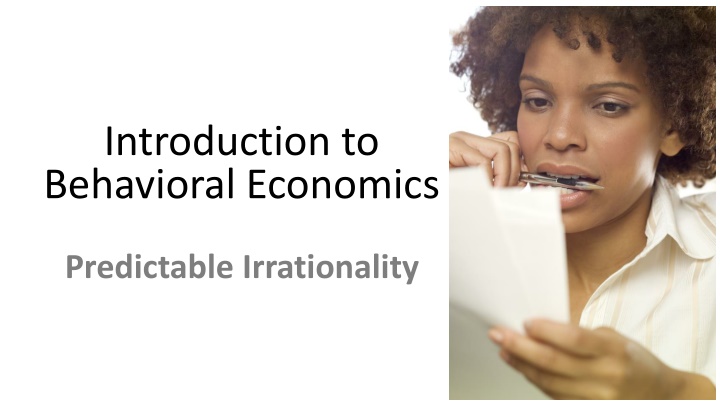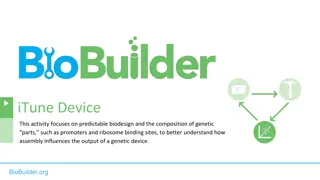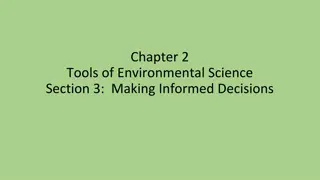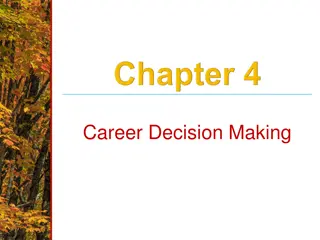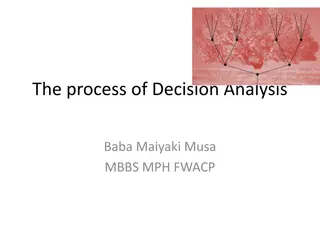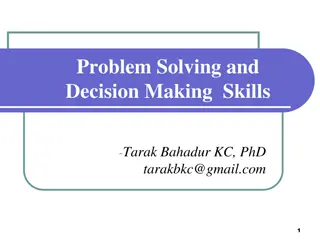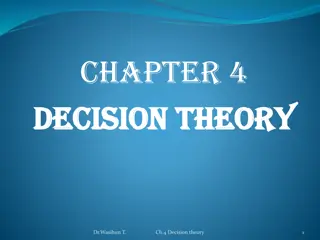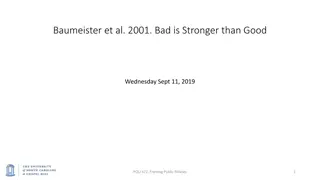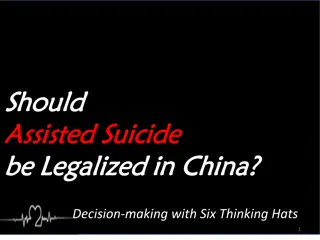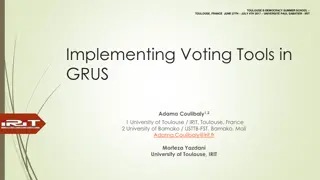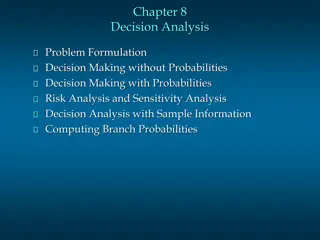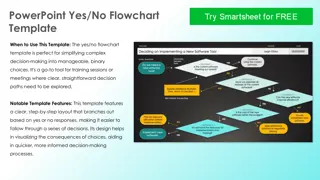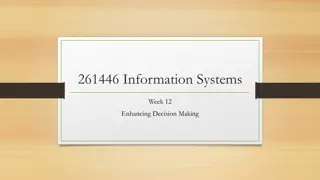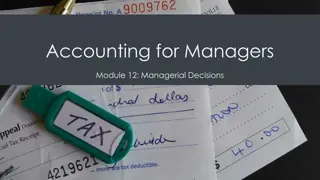Introduction to Predictable Irrationality in Decision-Making
In this class, discover the quirks in our decision-making processes through behavioral economics and learn strategies to enhance them. Test your cognitive responses with thought-provoking puzzles and unravel common cognitive biases with practical examples. Explore the intricate balance between rationality and irrationality to optimize your decision-making skills effectively.
Download Presentation

Please find below an Image/Link to download the presentation.
The content on the website is provided AS IS for your information and personal use only. It may not be sold, licensed, or shared on other websites without obtaining consent from the author.If you encounter any issues during the download, it is possible that the publisher has removed the file from their server.
You are allowed to download the files provided on this website for personal or commercial use, subject to the condition that they are used lawfully. All files are the property of their respective owners.
The content on the website is provided AS IS for your information and personal use only. It may not be sold, licensed, or shared on other websites without obtaining consent from the author.
E N D
Presentation Transcript
Introduction to Behavioral Economics Predictable Irrationality
In this class, we will learn that our decision-making processes might not be as perfect as we think. And we will learn how to improve them.
Quick test of speed in answering Answer the next question as quickly as you can (while still being accurate). Don t worry, it is a simple question and it won t count against you if you get it wrong. Ready?
A bat and ball together cost $1.10. The bat costs $1 more than the ball. How much does the ball cost? a) .05 b) .10 c) .55 d) $1.00 e) $1.10 a) .05 Most Common Answer (Wrong) If the bat costs $1 more than .10 it costs $1.10, So, the bat and ball TOGETHER would cost $1.20.
5 machines can make 5 widgets in 5 minutes 100 machines can make 100 widgets in ____ minutes
5 machines can make 5 widgets in 5 minutes 100 machines can make 100 widgets in 100 minutes This is the most common answer but it is incorrect
5 machines can make 5 widgets in 5 minutes 100 machines can make 100 widgets in 5 minutes This is the correct answer
Q: A lake has a patch of lily pads. Every day, the patch doubles in size. If it takes 48 days for the patch to cover the entire lake, how long would it take for the patch to cover half of the lake? A:
Q: A lake has a patch of lily pads. Every day, the patch doubles in size. If it takes 48 days for the patch to cover the entire lake, how long would it take for the patch to cover half of the lake? A: 47 days
Cognitive Reflection Task The three questions above are known as the Cognitive Reflection Task (CRT). Shane Frederick, Cognitive Reflection and Decision Making, Journal of Economic Perspectives 19 (2005): 24-42. After giving the test to nearly 3,500 people, Frederick found that only 17 percent got all three answers right and 33 percent got none right.
Try a letters test How many times does the letter F appears in the following sentence? FINISHED FILES ARE THE RESULT OF YEARS OF SCIENTIFIC STUDY COMBINED WITH THE EXPERIENCE OF YEARS
Your ability to identify letters How many times does the letter F appears in the following sentence? FINISHED FILES ARE THE RESULT OF YEARS OF SCIENTIFIC STUDY COMBINED WITH THE EXPERIENCE OF YEARS
A test of your decision-making skills Let s go with something simpler than numbers or letters. Identifying colors and shapes.
Identifying colors You will see a mixture of words, non- words, and shapes. Say the COLOR (red, blue, yellow, or green) of each form you see, as quickly as possible.
How many of you were able to name each color without any mistakes?
The Stroop Effect We just saw the following: When there s a red disk, people quickly say the color is red But when red font spells out the word blue, some people will incorrectly answer blue This shows that it is difficult to keep irrelevant information from affecting us For more on the Stroop Effect, see https://en.wikipedia.org/wiki/Stroop_effect
So, instead of numbers, letters, or colors, let s try shapes.
Which table has the longest tabletop? A) Table on the left B) Table on the right C) Neither (both are of equal length)
Which table has the widest tabletop? A) Table on the left B) Table on the right C) Neither (both are of equal width)
Which table has the longest tabletop?
Which table has the longest tabletop?
Which table has the longest tabletop?
Which table has the longest tabletop?
Which table has the longest tabletop?
Which table has the longest tabletop?
Which table has the widest tabletop?
Now that you know, does the illusion go away?
